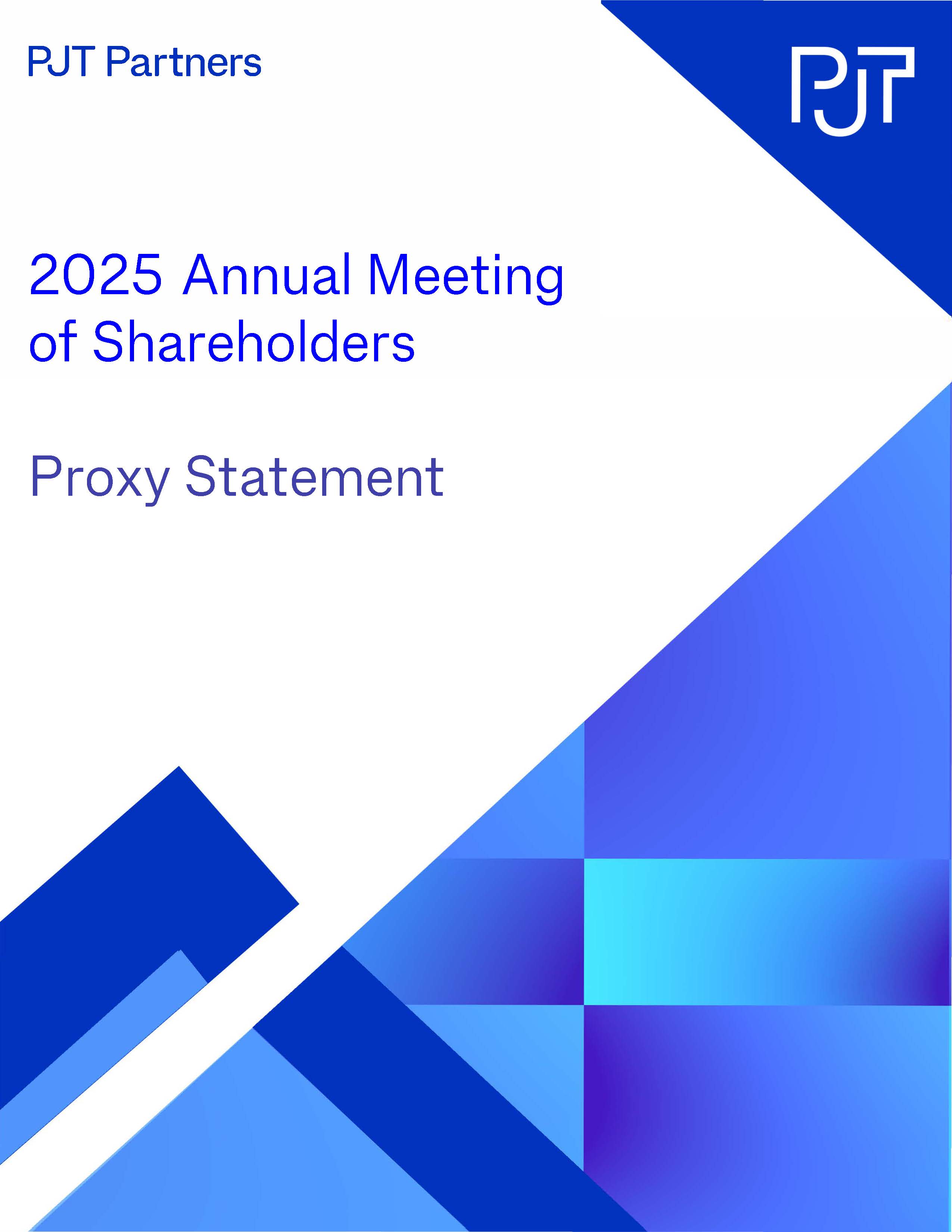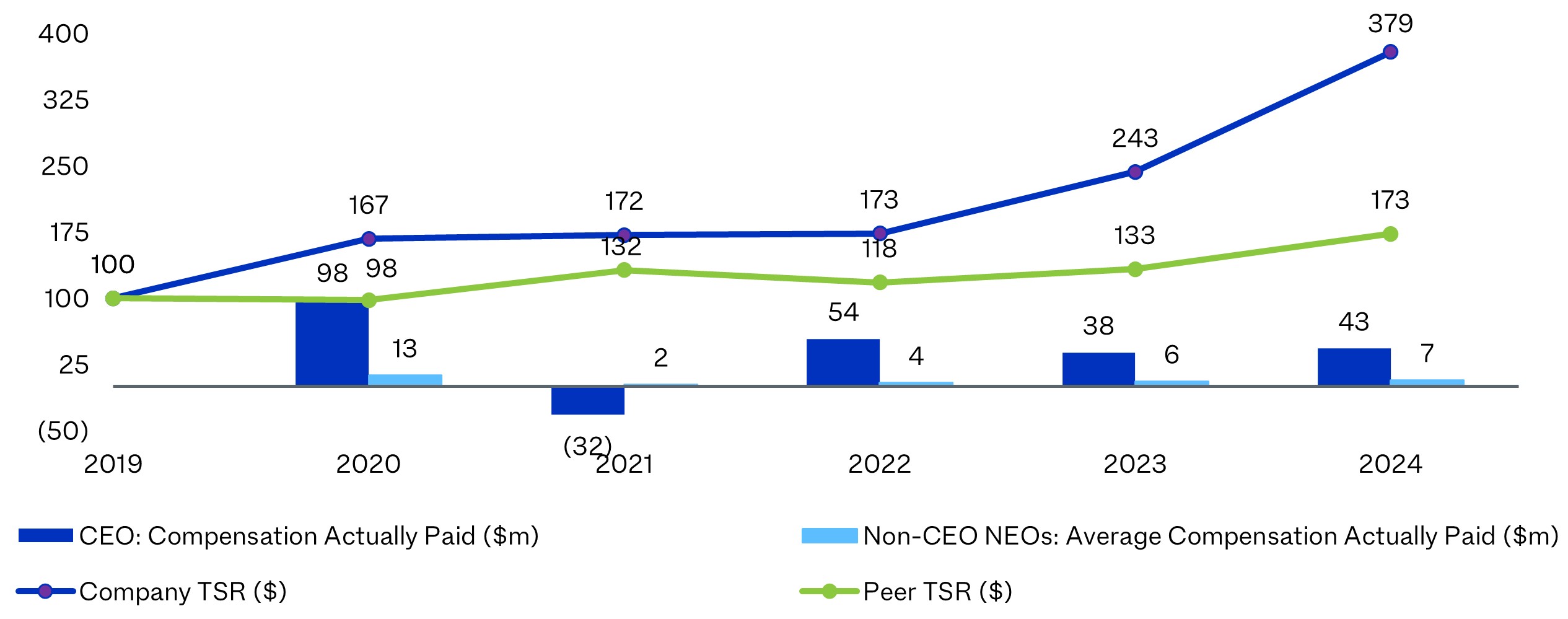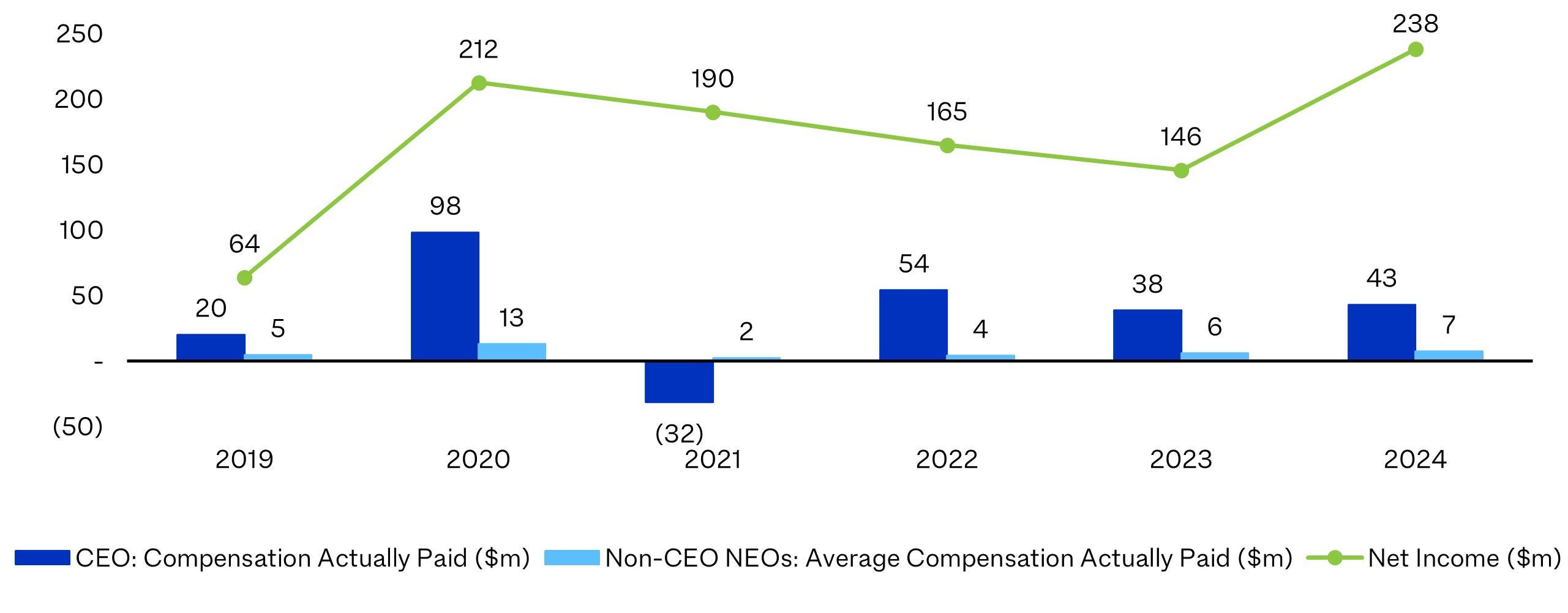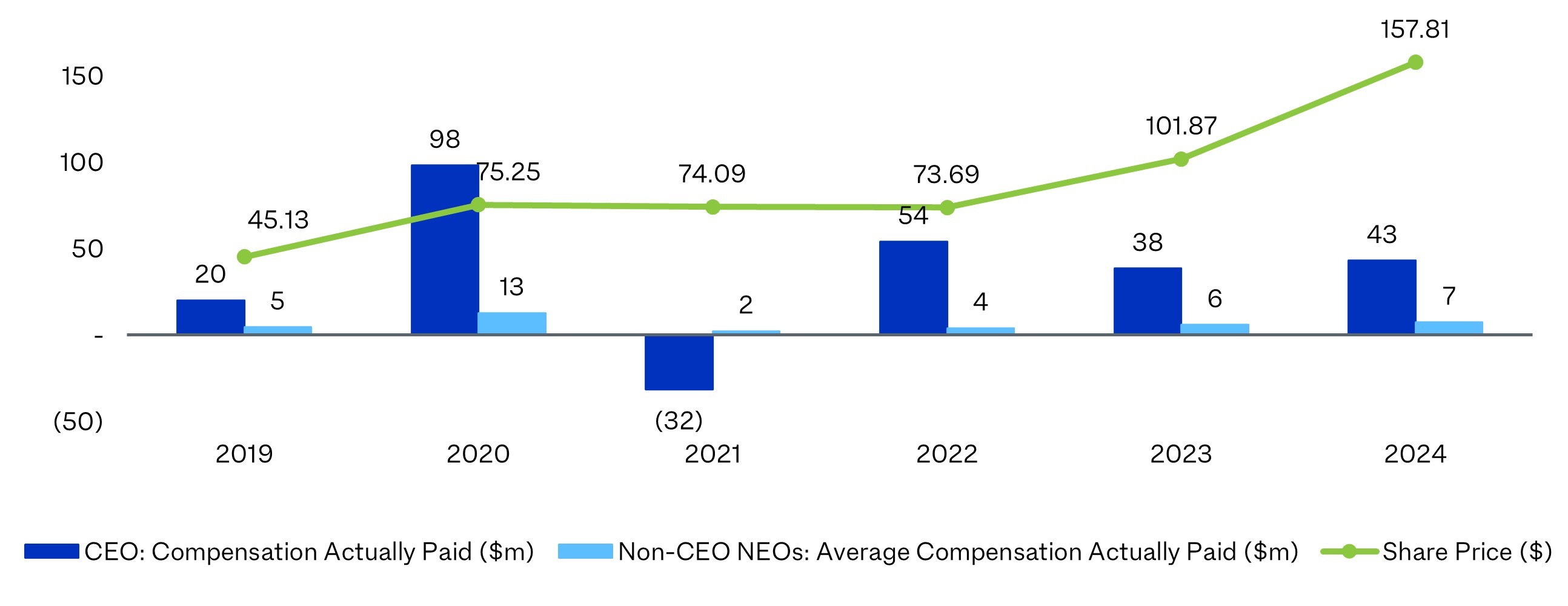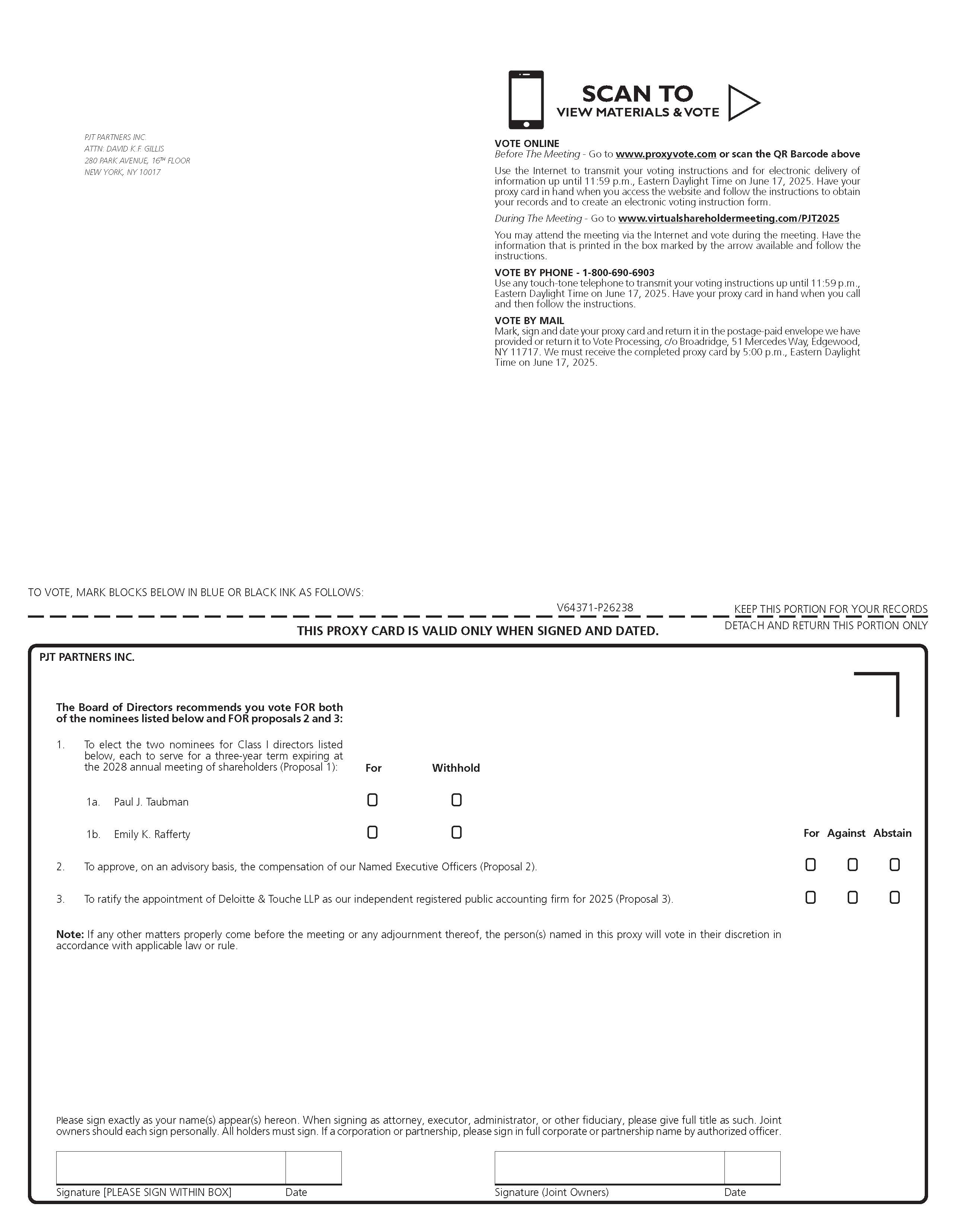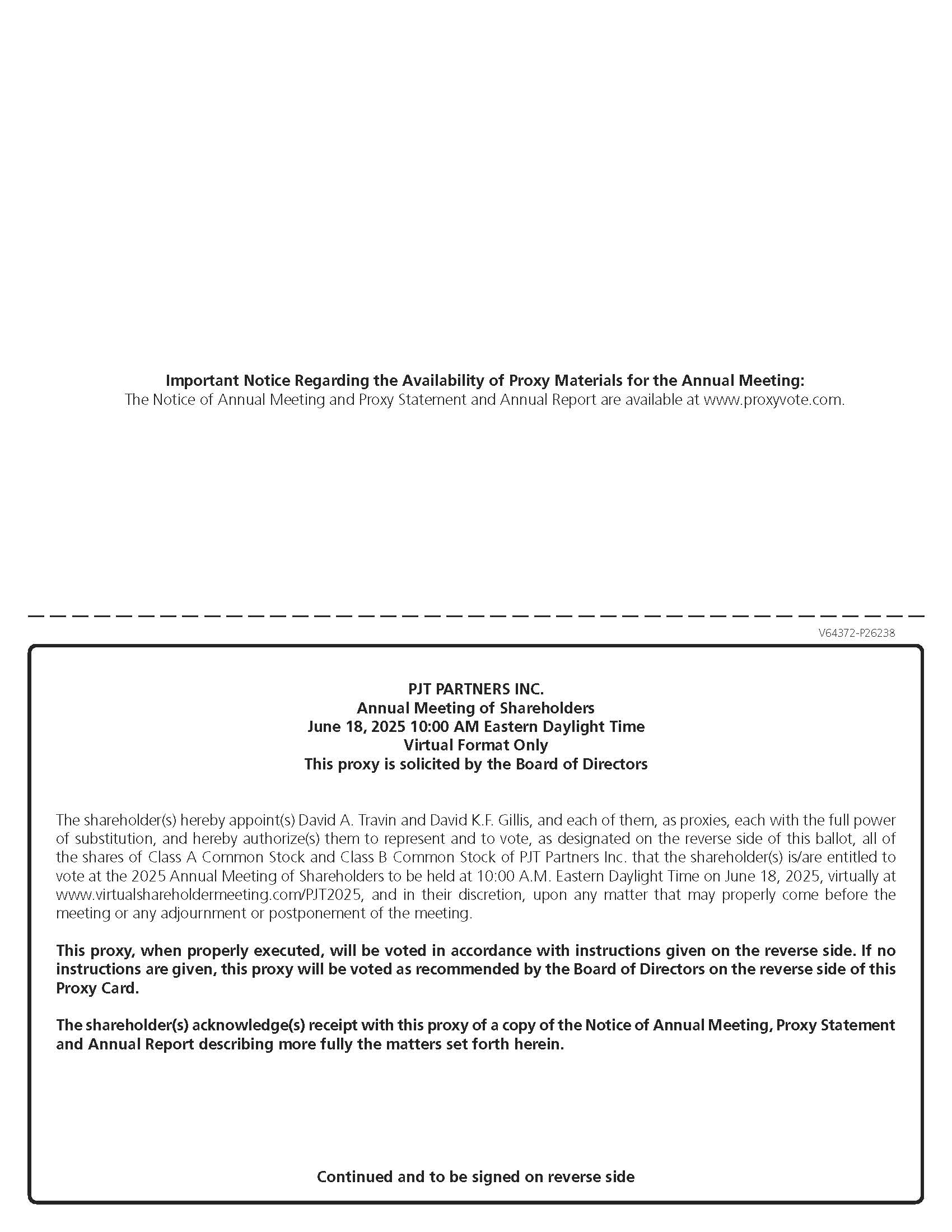6Based solely on information provided on a Schedule 13G/A filed with the SEC on November 8, 2024. BlackRock, Inc. has sole
voting power over 3,849,754 shares of our Class A common stock and sole dispositive power over 3,901,736 shares of our Class A
common stock. The business address of BlackRock, Inc. is 50 Hudson Yards, New York, New York 10001.
7Based solely on information provided on a Schedule 13G/A filed with the SEC on January 10, 2024. The Vanguard Group, Inc. has
shared voting power over 43,318 shares of our Class A common stock, shared dispositive power over 63,649 shares of our Class A
common stock and sole dispositive power over 2,366,042 shares of our Class A common stock. The business address of The
Vanguard Group is 100 Vanguard Boulevard, Malvern, Pennsylvania, 19355.
8The business address of Mr. Schwarzman is c/o Blackstone Inc., 345 Park Avenue, New York, New York 10154.
9Does not reflect 57,902, 784, 523, 1,044, 523 and 523 RSUs received by Mr. Cornwell, Mr. Costos, Ms. Rafferty, Mr. Ryan, Ms.
Skaugen and Mr. Whitney, respectively.
10Includes 7 shares of Class A common stock held in a trust for which Mr. Ryan’s wife is the investment trustee.
11Includes 1 share of Class B common stock and 6,750 Partnership Units held in a trust for which Mr. Whitney is the investment
trustee.
12Includes 1 share of Class B common stock and 100,000 Partnership Units beneficially owned by Ms. Lee’s children, for which Ms.
Lee disclaims beneficial ownership.
Section 16(a) Reports
Section 16(a) of the Exchange Act requires our directors and certain officers to file initial reports of
share ownership and reports of changes in share ownership with the SEC. Based solely on our review of copies
of such reports, we believe that all Section 16(a) filing requirements applicable to our directors and officers
were complied with during 2024.
Certain Relationships and Related Person Transactions
Our Board has adopted a written statement of policy regarding transactions with related persons,
which we refer to as our “related person policy.” Our related person policy requires that a “related person” (as
defined as in paragraph (a) of Item 404 of Regulation S-K) must promptly disclose to our General Counsel, or
such other person designated by our Board, any “related person transaction” (defined as any transaction that
is anticipated would be reportable by us under Item 404(a) of Regulation S-K in which we were or are to be a
participant and the amount involved exceeds $120,000 and in which any related person had or will have a
direct or indirect material interest) and all material facts with respect thereto. The General Counsel, or such
other person, will then promptly communicate that information to our Board. No related person transaction
will be executed without the approval or ratification of our Board or a duly authorized committee of our Board.
It is our policy that directors interested in a related person transaction will recuse themselves from any vote on
a related person transaction in which they have an interest.
Exchange Agreement
We have entered into the Exchange Agreement dated as of October 1, 2015, among PJT Partners
Inc., PJT Partners Holdings LP, and the Partnership Unitholders from time to time party thereto (as amended,
the “Exchange Agreement”) with the limited partners of PJT Partners Holdings pursuant to which they (or
certain permitted transferees) have the right, subject to the terms and conditions set forth in the Third
Amended and Restated Limited Partnership Agreement of PJT Partners Holdings LP, as amended (the
“Limited Partnership Agreement”), on a quarterly basis, to exchange all or part of their Partnership Units.
Further, pursuant to the terms in the Limited Partnership Agreement, our company may also require
Partnership Unitholders who are not Service Providers (as defined in the Limited Partnership Agreement) to
exchange such Partnership Units. We retain the sole option to determine whether to settle the exchange in
either cash or for shares of our Class A common stock on a one-for-one basis, subject to customary
conversion rate adjustments for splits, unit distributions and reclassifications. The price per Partnership Unit
to be received in a cash-settled exchange will be equal to the fair value of a share of our Class A common
stock (determined in accordance with and subject to adjustment under the Exchange Agreement). In the
event cash-settled exchanges of Partnership Units are funded with new issuances of our Class A common
stock, the fair value of a share of our Class A common stock will be deemed to be equal to the net proceeds
per share of our Class A common stock received by PJT Partners in the related issuance. Accordingly, in this
event, the price per Partnership Unit to which an exchanging holder of Partnership Units will be entitled may
be greater than or less than the then-current market value of our Class A common stock. The Exchange
Agreement also provides that a holder of Partnership Units will not have the right to exchange Partnership
Units in the event that PJT Partners determines that such exchange would be prohibited by law, or would

